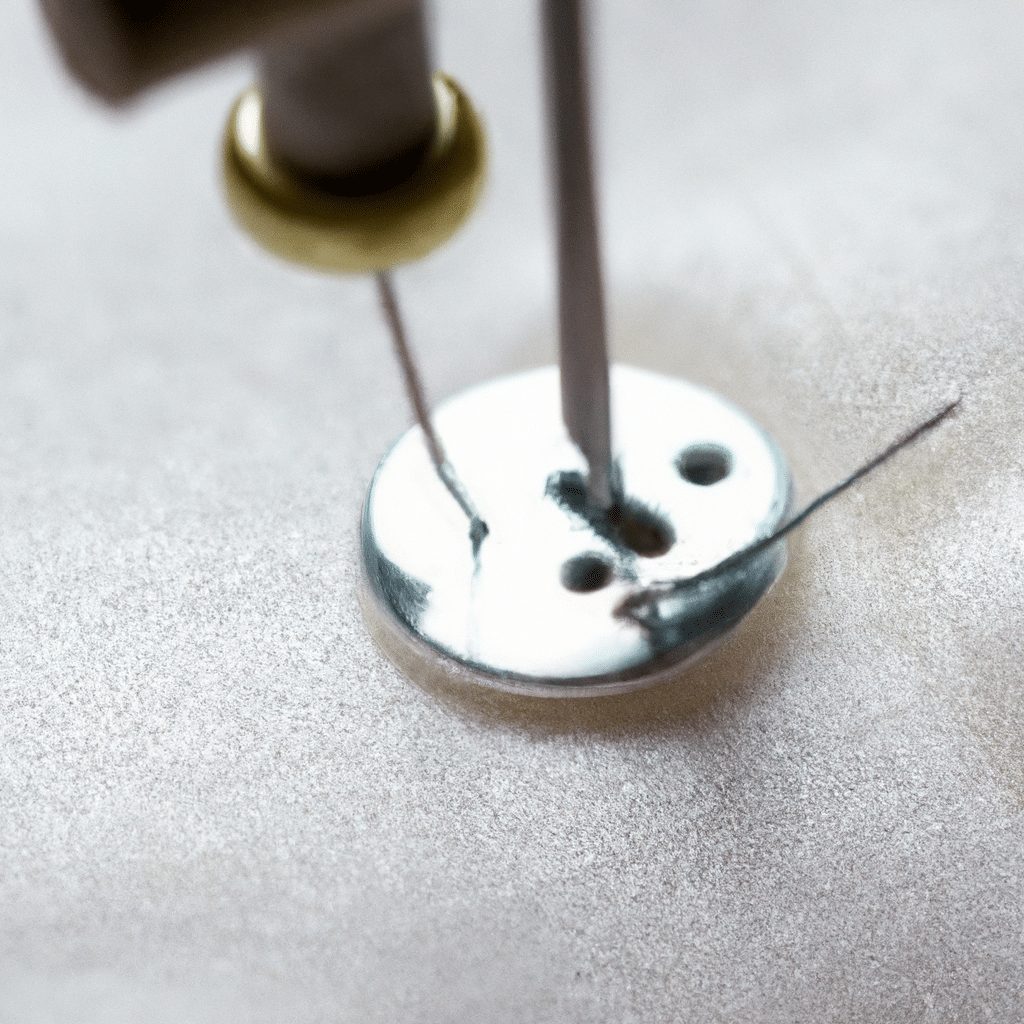Are you wondering how to fix a hole or hide a stain on your mattress? We’ve got you covered! Finding the right solution can save you from the hassle of replacing your entire mattress, whether it’s a pesky tear or an unsightly mark.
In this article, we’ll share simple and practical tips to help you patch up those holes and cover those stains, ensuring your mattress stays clean, fresh, and comfortable. Say goodbye to worry and hello to a rejuvenated sleep surface!
Review contents
Inspecting the Damage
Identifying the type and size of the damage
When repairing a mattress, the first step is to inspect the damage. We need to identify the type and size of the damage before proceeding with any repairs. Is it a stain or a hole? Is it a recent spill or a deep-seated stain if it’s a stain? If it’s a hole, how big is it, and where is it on the mattress? We can determine the best action for repairing or covering the damage by closely examining it.
Examining the mattress fabric
Before we can jump into repairing or covering the damage, it’s crucial to examine the mattress fabric. Different types of fabric require different cleaning methods and materials. If the fabric is delicate or requires special care, we must consider that when choosing a cleaning or repair method. By thoroughly inspecting the fabric, we can ensure that we choose the most suitable approach for cleaning or repairing the mattress.
Checking the condition of the mattress
In addition to inspecting the damage and examining the fabric, it’s essential to check the overall condition of the mattress. Are there any other areas of concern? Are there signs of excessive wear and tear? By assessing the condition of the mattress, we can determine whether it’s worth investing time and effort into repairing it or if it’s time to consider replacing it altogether. It’s always better to be well-informed before deciding on mattress repair or replacement.
Cleaning the Stain
Checking for any manufacturer guidelines
When dealing with a stain on a mattress, it’s advisable to check for any manufacturer guidelines before proceeding with any DIY cleaning solutions. Some mattresses come with specific instructions or warnings regarding cleaning methods. By following these guidelines, we can ensure we don’t accidentally cause further damage to the mattress or void warranties.
Using a mild cleaning solution
A mild cleaning solution can often do the trick if there are no specific manufacturer guidelines. Mixing a small amount of mild detergent or dish soap with warm water can be an effective DIY solution for removing stains from a mattress. However, it’s essential to spot-test the cleaning solution on a small, inconspicuous mattress area first to ensure it doesn’t cause discoloration or damage.
Applying the solution to the stain
Once we have our mild cleaning solution prepared, we can apply it to the stain on the mattress. Using a clean cloth or sponge, gently dab the solution onto the stain, being careful not to saturate the mattress. It’s crucial to avoid rubbing the stain vigorously, as this can push the stain deeper into the mattress fabric. Instead, use a blotting motion to lift the stain from the surface.
Blotting the stain gently
After applying the cleaning solution, it’s important to blot the stain gently. This helps to absorb the stain and any excess moisture from the mattress. Using a clean, dry cloth or paper towel, gently press down on the stain and lift it off the mattress. Repeat this process until the stain is no longer visible or until the cloth comes away clean.
Allowing the mattress to dry
Once the stain has been treated and blotted, allowing the mattress to dry completely before using it again is essential. This usually takes a few hours, depending on the size of the stain and the amount of cleaning solution used.
Ensuring the mattress is completely dry is essential to prevent mold or mildew from developing. Leaving the mattress in a well-ventilated room or using a fan to speed up the drying process can be helpful.
Repairing a Hole
Assessing the size and location of the hole
If we’re dealing with a hole in the mattress, it’s crucial to assess the size and location of the hole before attempting any repairs. Is it a small pinhole or a more significant tear? Is it visible or hidden underneath the mattress fabric? By understanding the specifics of the hole, we can determine the best approach for repairing it and ensure that the repair is effective and long-lasting.
Gathering necessary materials for the repairWe’ll need a few materials to repair a hole in a mattress. These may include a patch material, adhesive suitable for fabric, scissors, and a clean cloth. Gathering all the necessary materials before starting the repair process is essential to ensure a smooth and efficient repair.
Cutting a patch material
Once we have the necessary materials, we can cut a patch material. The patch should be large enough to cover the entire hole with a bit of overlap. Choosing a patch material that matches the mattress fabric as closely as possible is essential for a seamless repair.
Applying adhesive to the patch and the hole
After cutting the patch material, we need to apply adhesive to both the patch and the hole in the mattress. It’s essential to use an adhesive specifically designed for fabric repairs to ensure a solid and durable bond.
Pressing the patch firmly onto the hole
Once the adhesive has been applied, we can press the patch firmly onto the hole. Ensuring the patch is centered and aligned correctly is essential to ensure an even repair is possible. We can use a clean cloth to apply pressure and ensure the patch adheres firmly to the mattress.
Allowing the adhesive to cure
After applying the patch, allowing the adhesive to cure fully before using the mattress again is crucial. This usually takes at least 24 hours, but it’s best to refer to the adhesive manufacturer’s instructions for specific drying times. During this curing period, it’s essential to avoid putting weight or pressure on the repaired area to allow the adhesive to set correctly.
Covering a Stain with a Mattress Pad
Selecting a suitable mattress pad
If the stain on the mattress is challenging to remove or the damage is extensive, covering it with a mattress pad can be a practical solution. When selecting a mattress pad, choosing one suitable for your specific needs and preferences is essential. Consider factors such as comfort, breathability, and material.
Choosing a pad with waterproof properties
To ensure that the stain is fully covered and protected, it’s advisable to choose a mattress pad with waterproof properties. This will prevent any liquids from seeping through the pad and reaching the mattress surface, preserving its integrity and preventing further staining.
Cleaning the stain before covering it
Before placing the mattress pad over the stain, it’s essential to clean the stain as thoroughly as possible. This can involve using a mild cleaning solution or following the appropriate cleaning recommendations from the mattress pad manufacturer. By cleaning the stain beforehand, we can ensure that the pad will remain clean and prevent any potential odors from developing.
Placing the mattress pad over the stain
Once the stain has been cleaned, we can place the mattress pad over the affected area. Ensure to align the pad properly and smooth out any wrinkles or folds. Ensuring that the mattress pad covers the entire stained area is to provide maximum coverage and protection.
Securing the pad in place
Consider using fitted sheets or elastic straps designed explicitly for the mattress pads to keep the mattress pad securely in place. These will help prevent the pad from shifting or slipping during use, ensuring the stain remains covered and protected.
Using Mattress Toppers to Hide Stains
Opting for a thicker mattress topper
If a mattress pad doesn’t provide enough coverage or the stain is still visible, using a mattress topper can be a suitable option. Opting for a thicker mattress topper can help hide the stain effectively and provide additional comfort and support. Look for a topper with the desired thickness and plushness to meet your preferences.
Choosing a topper with a pattern or color
To further disguise the stain and add a decorative touch to the mattress, consider choosing a topper with a pattern or color. This can help to divert attention away from the stained area and create a more visually appealing appearance. With a wide variety of patterns and colors available, there’s bound to be a topper that suits your style and complements your bedroom decor.
Ensuring the topper fits properly
Before purchasing a mattress topper, it’s crucial to ensure it fits properly. Take accurate mattress thickness and dimensions measurements to find a topper that aligns perfectly. A well-fitted topper will provide better coverage and stay securely in place during use, ensuring optimal comfort and appearance.
Removing the topper for cleaning
To maintain cleanliness and hygiene, it’s essential to remove the mattress topper for cleaning periodically. Follow the manufacturer’s instructions for proper care and cleaning methods to ensure the topper remains in good condition. Regularly cleaning the topper can prolong its lifespan and preserve its appearance.
Using a Mattress Cover
Selecting a mattress cover
A mattress cover is a protective layer that fits the entire mattress, providing an extra barrier against stains, spills, and allergens. When selecting a mattress cover, choosing one suitable for your mattress size and type is essential. Consider breathability, waterproofing, and hypoallergenic properties to find the best option.
Ensuring the cover is waterproof
To effectively protect the mattress from stains and spills, it’s crucial to ensure the mattress cover is waterproof. This will prevent liquids from seeping through and reaching the mattress surface, safeguarding it against potential damage and odors. Look for a mattress cover that specifically mentions its waterproof properties.
Checking the cover’s dimensions
Before applying the mattress cover, it’s essential to double-check its dimensions to ensure that it fits your mattress correctly. Ensure the cover fully encases the mattress and fits snugly without any excess fabric or stretching. A well-fitting cover will provide optimal protection and stay securely in place.
Applying the cover over the mattress
Once you have the correct size mattress cover, it’s time to apply it over the mattress. Start by placing the cover at one end of the mattress and slowly work your way around, ensuring that the cover is pulled taut and covers the entire mattress surface. Smooth out any wrinkles or folds to achieve a neat and uniform appearance.
Securing the cover in place
To ensure that the mattress cover stays secure, consider using elastic straps or fitted sheets designed explicitly for mattress covers. These will help to anchor the cover and prevent it from shifting or slipping during use. By keeping the cover securely in place, you can maintain optimal protection for your mattress.
Repairing a Hole with a Patch Kit
Purchasing a mattress patch kit
If the hole in your mattress is too large for a simple DIY repair, a mattress patch kit can come to the rescue. These kits often contain all the necessary materials and instructions for repairing holes in mattresses. It’s essential to purchase a patch kit that matches the type of fabric and the color of your mattress for the best possible repair.
Cleaning and drying the damaged area
Before attempting to use a patch kit, cleaning and drying the damaged area thoroughly is crucial. Use a mild cleaning solution or follow the instructions in the patch kit to ensure the area is free from any dirt, dust, or debris. The patch must adhere appropriately to the mattress surface for a successful repair.
Cutting the patch to an appropriate size
Once the damaged area is clean and dry, it’s time to cut the patch to an appropriate size. Ideally, the patch should be slightly larger than the hole to ensure complete coverage. Follow the patch kit instructions for cutting the patch and any additional steps required.
Applying adhesive to the patch
With the patch cut to size, it’s time to apply adhesive. The patch kit should come with a suitable adhesive designed for mattress repairs. Apply the adhesive according to the instructions, ensuring even coverage on the entire patch.
Placing and smoothing the patch onto the hole
Once the adhesive has been applied to the patch, carefully place it over the hole in the mattress. Press down firmly, ensuring that the patch is centered and aligned correctly. Use a clean cloth to smooth out air bubbles or wrinkles, ensuring the patch adheres securely to the mattress fabric.
Allowing the adhesive to dry
After placing the patch onto the hole, allowing the adhesive to dry completely before using the mattress again is crucial. Follow the instructions provided in the patch kit for the recommended drying time. It’s essential to avoid putting any pressure or weight on the repaired area during this curing period to ensure a long-lasting and effective repair.
Considering Professional Repair Services
Researching local mattress repair services
If the mattress damage is extensive or you’re unsure about your DIY repair skills, it may be worth considering professional repair services. Start by researching local mattress repair companies to find reputable professionals specializing in mattress repair. Review reviews and gather recommendations from friends or family to ensure you choose a reliable and experienced service provider.
Checking for warranty coverage
Before contacting professional repair services, you must check if your mattress is still under warranty. Some warranties may cover repairs or replacements for certain types of damage. Review the terms and conditions of your warranty to see if the damage you’re dealing with is eligible for coverage. If so, contact the mattress manufacturer or retailer to inquire about their warranty process and any repair options available.
Contacting professional repair services
Once you have gathered information about local repair services and warranty coverage, it’s time to contact professional repair services for further assistance. Contact them via phone or email to discuss your specific mattress damage and inquire about their repair options. Provide as much detail as possible, including the type and size of the damage, for an accurate assessment and cost estimate.
Discussing the specific damage and repair options
When speaking with professional repair services, discuss the specific damage to your mattress and inquire about the repair options available. Depending on the severity and type of damage you’re dealing with, they may offer different solutions. Ask questions or express any concerns to ensure you’re making an informed decision about the repair process.
Obtaining cost estimates
During communication with professional repair services, obtain cost estimates for the repair work. Ask for a breakdown of the costs, including materials, labor, or additional fees. This allows you to compare quotes and make a financially sound decision based on your budget and the extent of the damage.
Preventing Future Damage
Using mattress protectors
Consider investing in a mattress protector to prevent future damage to your mattress. A mattress protector is a barrier between your mattress and potential spills, stains, dust mites, and allergens. It provides an additional layer of protection and is generally easy to remove and clean. By using a mattress protector, you can prolong the lifespan of your mattress and maintain its cleanliness and integrity.
It is regularly cleaning and maintaining the mattress.
Regular cleaning and maintenance are crucial to preventing future damage and extending the lifespan of your mattress. Follow the manufacturer’s instructions for cleaning and care, which may include vacuuming, rotating, and airing out the mattress regularly. Keeping the mattress clean and well-maintained can minimize the risk of staining, odor buildup, and general wear and tear.
Avoiding eating or drinking on the bed
One of the easiest ways to prevent stains and spills on your mattress is to avoid eating or drinking on the bed. Accidents happen, and spills are difficult to avoid altogether, so it’s best to stick to eating and drinking in designated areas away from the mattress. Keeping food and beverages away from the bed can significantly reduce the chances of stains and potential damage.
Keeping pets away from the mattress
If you have pets, it’s essential to establish boundaries and prohibit them from accessing the mattress. Pets can accidentally cause damage to the mattress with their claws, hair, or bodily fluids. By keeping pets away from the mattress and providing them with their designated sleeping areas, you can prevent any potential damage and maintain the cleanliness of your mattress.
Being cautious during moving or transportation
During times when you need to move or transport your mattress, it’s essential to exercise caution to prevent any damage. Whether moving to a new home or simply rearranging furniture, take the necessary precautions to avoid dragging or dropping the mattress. Use proper lifting techniques, secure the mattress with straps or ropes, and protect it with a mattress cover or bag during transportation.
Knowing When to Replace a Mattress
Assessing the overall condition of the mattress
Even with regular maintenance and care, mattresses have a limited lifespan. Over time, they can become less supportive, develop permanent indentations, or lose comfort. It’s essential to assess the overall condition of your mattress periodically to determine if it’s still providing the level of support and comfort you need for a restful night’s sleep.
Checking for signs of wear and tear
Examine your mattress for any visible signs of wear and tear. This can include sagging, lumps, or visible coils. If you notice these signs, it may indicate that your mattress has reached the end of its lifespan and needs to be replaced. Additionally, pay attention to any strange sounds, odors, or allergenic reactions that may indicate a deteriorating mattress.
Considering the age of the mattress
Age is another crucial factor when determining whether to replace your mattress. Most mattresses have an average lifespan of 7 to 10 years, although this can vary depending on factors such as the quality of the mattress, frequency of use, and overall care. If your mattress is approaching or exceeding this range, exploring replacement options may be a good idea.
Noting changes in comfort or support
If you’ve noticed a significant decline in the comfort or support of your mattress, it may be a clear indication that it’s time for a replacement. Waking up with aches and pains or feeling unrested despite a whole night’s sleep could be signs that your mattress no longer provides the support you need. Don’t compromise your sleep quality – consider investing in a new mattress that meets your comfort and support preferences.
Consulting with professionals for advice
If you’re unsure whether it’s time to replace or repair your mattress, consider consulting with professionals for advice. They can provide expert insights based on your mattress type, age, and specific concerns. Professional input can help youdecidet whether to repair or replace your mattress, ensuring that you invest in a suitable option for your sleep needs.
In conclusion, when it comes to patching a hole or covering a stain on a mattress, various DIY methods and professional services are available. Whether you choose to clean the stain, repair the hole, or cover it with a mattress pad, topper, or mattress cover, it’s essential to assess the type and size of the damage, select the appropriate materials, and follow proper procedures to ensure effective and long-lasting results.
Additionally, taking preventive measures, such as using mattress protectors and being cautious during moving or transportation, can help minimize future damage. Knowing when to replace a mattress is essential for maintaining optimal sleep comfort and support. By regularly assessing the mattress’s condition and seeking professional advice, you can make an informed decision that aligns with your sleep needs and preferences.
































